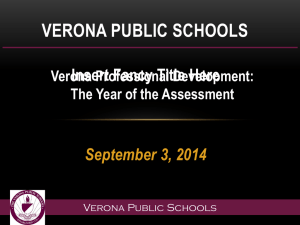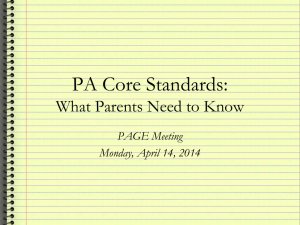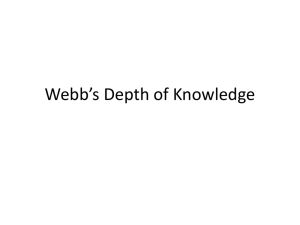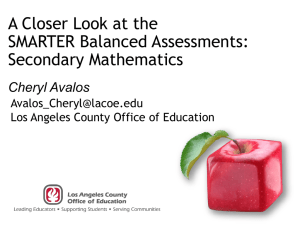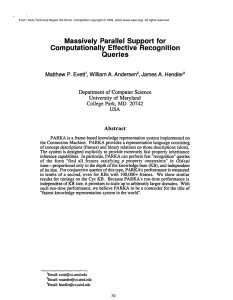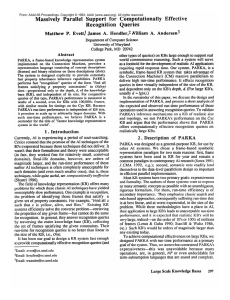Patterns- Parka Trim
advertisement
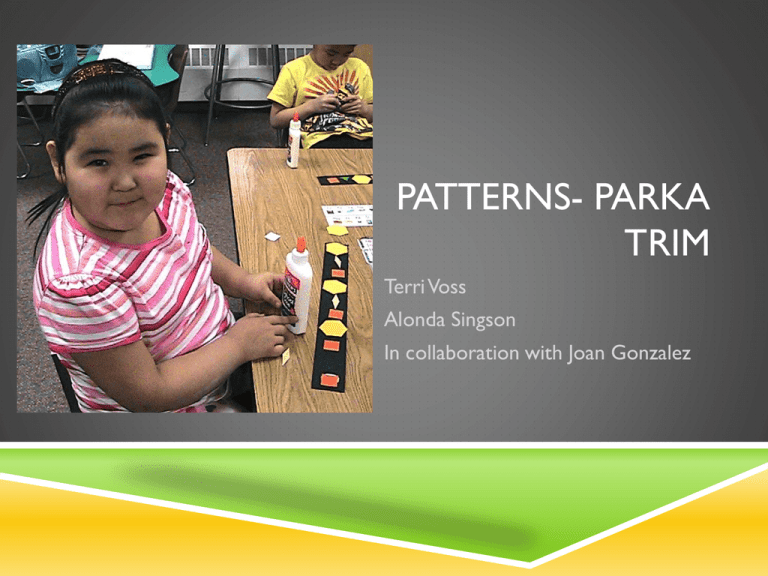
PATTERNS- PARKA TRIM Terri Voss Alonda Singson In collaboration with Joan Gonzalez UBD…. GETTING STARTED Inupiaq Learning Framework (ILF) Overarching Understandings Essential Questions Performance Expectations Inupiaq Learning Framework (ILF) Overarching Understanding & Essential Question Performance Expectation OU: Expertise in sewing can be Sewing expertise is essential a matter of life and death in the Arctic environment. [E.s.3] EQ: How is appropriate clothing essential to life in the Arctic? [E.s.3.a] E.s.3 The student demonstrates an understanding of sewing skills by . . . [B] E.s.3.7 Drawing or looking at pictures of people wearing various types of traditional clothing, and talking about them. Overarching Understanding & Essential Question OU: The process of providing clothing requires the efforts of many. [E.s.4] EQ: What do you contribute toward the making or providing of clothing for yourself or your family? [E.s.4.a] EQ: How does the act of providing clothing make a family stronger? [E.s.4.b] Performance Expectation Sewing as a community affair E.s.4 The student demonstrates an understanding of the contributions many people make to sewing by . . . [B] E.s.4.4 Identifying clothing that is appropriate for various occasions and functions. Overarching Understanding & Essential Question OU: Traditional clothing is an integral part of survival in the Arctic. [E.s.5] EQ: How is clothing related to survival? [E.s.5.a] Performance Expectation Clothing for survival E.s.5 The student demonstrates an understanding of how integral clothing is to survival by . . . [B] E.s.5.1 Predicting what would happen if clothing were damaged; e.g., his/her parka became torn or his/her shoes became wet in freezing weather. [B] E.s.5.2 Role playing a solution to damaged clothing. UNIT FOCUS Extend, reproduce and create patterns Geometric vocabulary Inupiaq vocabulary Appropriate clothing for the Arctic KNOWLEDGE STUDENTS WILL KNOW… the next sequence in the pattern? (presented with a pattern). the rule the pattern follows? (presented with a pattern). the difference between male/female parka trim. geometric vocabulary terms: (rhombus, square, triangle, etc). Inupiaq words for: trim, jacket/parka, boy/girl, woman/man. SKILLS STUDENTS WILL BE ABLE TO… reproduce a given pattern. extend a pattern. create a pattern. name geometric shapes. Alaska State Standards Mathematics English/Language Arts K-5 ENGLISH/LANGUAGE ARTS STANDARDS (2012), GRADE 1, WRITING RESEARCH TO BUILD AND PRESENT KNOWLEDGE W.1.8 With guidance and support from adults, recall information from experiences or gather information from provided sources to answer a question. MATHEMATICS (2012), GRADE 1, OPERATIONS & ALGEBRAIC THINKING 1.OA Identify and continue patterns. 1.OA.9. Identify, continue and label patterns (e.g., aabb, abab). Create patterns using number, shape, size, rhythm or color. MATHEMATICS (2012), GRADE 1, GEOMETRY 1.G Reason with shapes and their attributes. 1.G.1. Distinguish between defining attributes (e.g., triangles are closed and three-sided) versus non-defining attributes. Identify shapes that have non-defining attributes (e.g., color, orientation, overall size). Build and draw shapes given specified attributes. GRASPS TASK PERFORMANCE ASSESSMENT You are a seamstress. You have been asked to design parka trim for your family to use on new winter parkas. Your design should include an original repeating pattern with at least three attributes.You will explain your pattern to your classmates. Oral Presentation (DOK 3) Parka Trim Pattern design (DOK 4) LEARNING EXPERIENCES K-W-L CHART Class discussion using KWL chart on patterns. Topics to include: patterns in everyday life and patterns found in nature. (seeds/plants, animals) (DOK 1) What we Know What we Want to know What we Learn GEOMETRIC SHAPES Introduce geometric shapes and attributes: hexagon, triangle, square, rhombus, parallelogram, rectangle. Shapes are then displayed on board using magnetic strips for students to reference. (DOK 1) Students complete journal entry geometrical shapes. (DOK 2) Geometric Vocabulary Parallelogram Trapezoid Rectangle Square Triangle Rhombus Hexagon INUPIAQ VOCABULARY Introduce Inupiat vocabulary: qupak- trim, atigi- pullover parka, quppigaaq-zipper, parka, agnaiyaaq- girl, agnaq- woman, anutaiyaaq- boy, anun- man. Vocabulary cards are then displayed on the board using magnetic strips for the students to reference. While discussing vocabulary, display and discuss pictures of local parkas and parka trim. (DOK 1) Students complete journal entry on Inupiat vocabulary. (DOK 2) Inupiaq Vocabulary Parka/Jacket Parka trim Man/Woman Boy/Girl COMMUNITY GUEST SPEAKER Discuss the importance of wearing proper clothing in cold weather especially during a hunting trip. (DOK 1) Students complete journal entry on guest speaker. (DOK 2) COPY & CREATE A REPEATING PATTERN Copy a repeating pattern using pattern block shapes (DOK 1) Create a repeating pattern using paper pattern block shapes. (DOK 4) Creating patterns! COMMUNITY GUEST SPEAKER Discuss the difference in male and female parka trim and the different styles for male and female. (DOK 1) Students complete journal entry on guest speaker explaining the difference between male/female trim and the different furs used in making male/female parkas. (DOK 2) COMMUNITY GUEST SPEAKER Discuss the difference in regional trims. (Pt. Hope, Barrow) See Regional Differences Video Link (DOK 1) Students complete journal entry on guest speaker focusing on the difference in regional trim. (DOK 2) JOURNAL ENTRY TIME! COMPLETED ASSESSMENTS!



